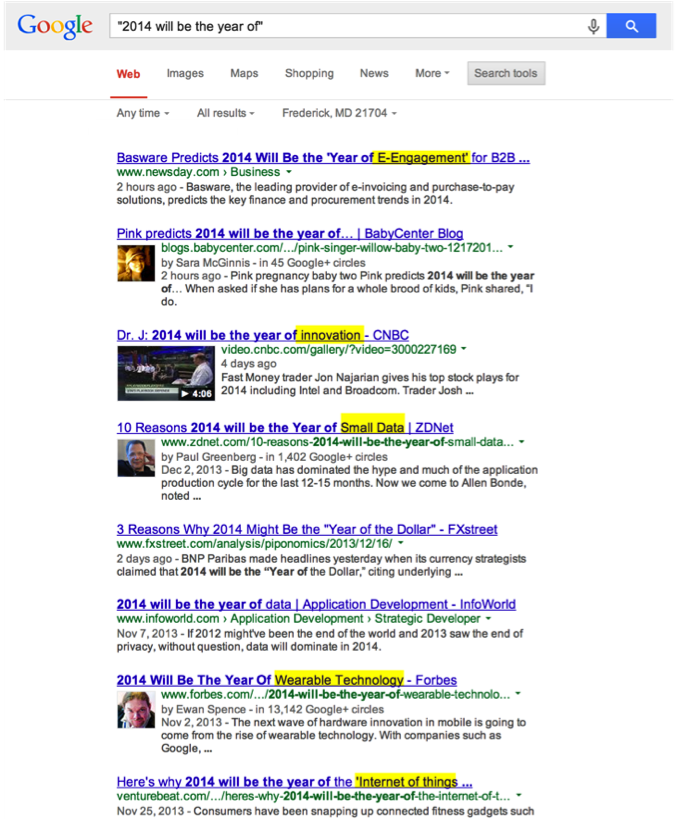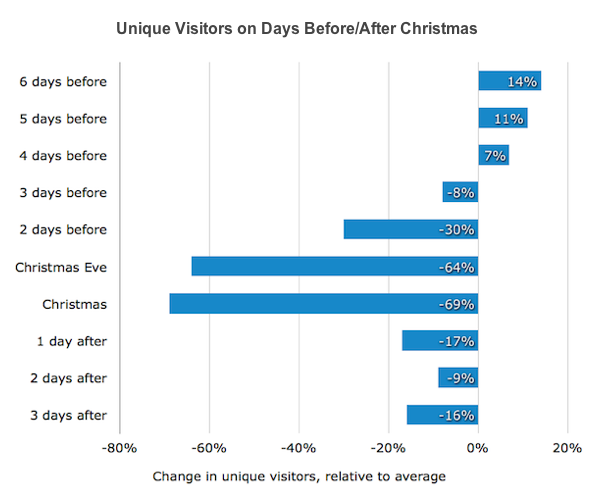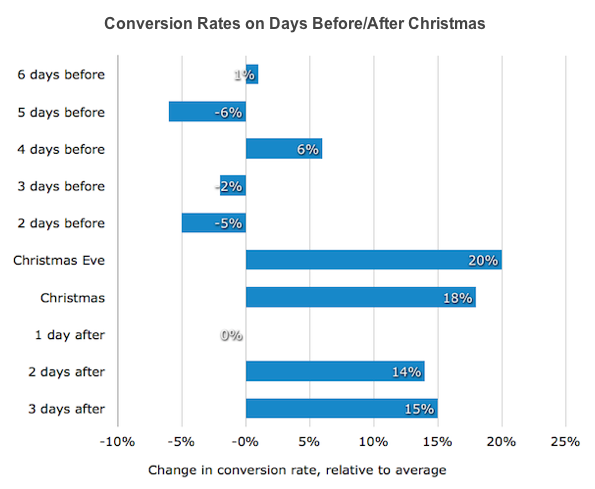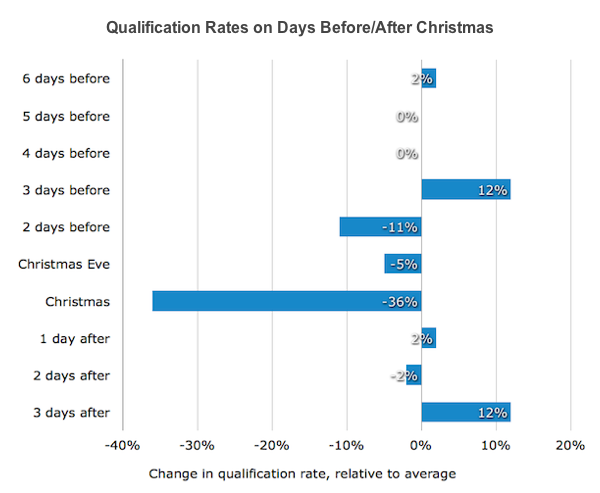by gabriel_sales | Jan 3, 2014
How to use social proof to your advantage in b2b sales
This is the second part of a series on social proof in B2B. To read part one, titled, “Why is Social Proof Effective in Marketing?”, click here.
Tips for Using Social Proof in B2B
Social proof5 is a little bit harder to demonstrate in B2B than it is in B2C; a midlevel office software management software is never going to have the “likes” or “followers” that Apple does. However, there are still many ways for B2B companies to leverage the immense power of social proof6 in the buying process; below, we discuss three.
Use social proof7 with language
Not all social proof8 has to be blatantly obvious. You can incorporate subtle messages into the language of your sales and marketing content that hint at your customers’ high level of satisfaction. For example, in an email, say something like, “ 300 customers agree that our solution is the best for . . .” or “Our 99% customer retention rate tells us . . .” to help put customers at ease by giving them a reason to believe you are both credible and trustworthy.
It is best to be as specific as possible to help strengthen the credibility and similarity (in relation to your prospect) you are perceived to have. For example, the sentences above could be changed to “300 of New England’s law firms agree that our solution is the best for . . .” and “Our 99% retention rate of Fortune 500 companies tells us . . .”. These may seem like small details, but they can have a significant impact in helping you earn a prospect’s trust.
Use social proof9 with visuals
B2B companies can also leverage social proof10 through a variety of visual tactics. If your company has clients who are well-respected and well-known, featuring their logos on your website and throughout sales and marketing content is a great way to demonstrate credibility. You can also ask your clients to record video testimonials where they talk about the value your product/service brought to their company. For a CEO in the midst of a purchase decision, seeing another CEO (who is perceived to be both similar and credible) give his opinion on your product or service can be extremely persuasive.
If you are unable to get your clients on camera, you can use pictures instead. Seeing a face next to a written testimonial has been shown to help increase the likelihood of the testimonial being believed.
Use social proof11 with stories
Despite the enormous amount of statistical data now at our fingertips, humans are still much more persuaded by stories. It is not that we don’t like or don’t trust numbers, we just need something more to be genuinely persuaded. Susan Weinschenck, author of Neuro Web Design: What makes them click, explains, “If you want people to act on the data, then you need to couple it with emotional data.” Stories provide this emotional data and when used correctly, can be very powerful in changing consumer opinion and behavior.
To use stories as social proof12 through B2B marketing content, ask your customers to explain a specific time when you were able to help them or describe what the start-up/implementation process was like. By asking them how they felt while working with you, you may get a more emotional and therefore more persuasive response. Here’s an example of an ideal B2B story testimonial:
“My boss was breathing down my neck as I was trying to find a solution for X. He said he wanted something next week, and everything I was looking at seemed either poor quality or too expensive. I was desperate. When I found Company Z, the team was extremely helpful and worked with me to get everything set up running smoothly within three days! My boss hasn’t stopped thanking me since.”
Emotional stories like this are a great form of social proof13 for two reasons. First, they allow prospects to see that another person felt the pain they now feel during the buying process. Second, they allow prospects to imagine the relief and accomplishment your customer felt when they chose you as a solution. By creating emotional associations and connections, stories carry influence that data cannot compete with.
For more on why emotional connection matters in B2B, click here. Feel free to contact us with any questions.
by gabriel_sales | Dec 23, 2013
 This is part-two of a two part blog on B2B sales and marketing trends in 2014. Click here for part one.
This is part-two of a two part blog on B2B sales and marketing trends in 2014. Click here for part one.
Transparency
The second B2B trend I predict for 2014 is a focus on increased transparency—both internally and externally.
For the past several years, many B2B companies have started experimenting in the new world of digital content marketing, marketing automation, customer relationship management, etc. While most companies that have engaged in these strategies have seen increases in marketing effectiveness and sales revenue, executives often want to see transparent, concrete numbers before increasing budget allocation. Because of this, analytical tools for measurement of all sales and marketing tactics will become increasingly important in order to prove ROI and justify increased digital spend.
In 2014, transparency is also going to be increasingly important for prospects. One reason for this is the increased use of the Internet and web-based technologies, which have made consumers significantly more well-informed. These smarter consumers know a scam when they see one and have been bombarded with enough advertising throughout their lives to know when a company is blowing smoke. When searching for products and services, buyers today want to feel like they are having authentic experiences with truthful companies. To satisfy this desire, you need to be authentically transparent.
One example of the immense power of transparency in business is the recent success of Dominos pizza. Instead of continuing with the same marketing message they had for years, Dominos chose to listen to their customers’ feedback on the poor quality of their product. They admitted publically (through a mass media campaign) that their pizza did not meet their customers’ standards for taste and that they were completely recreating their recipe to make up for it. The result? Doubled profits.
While these will not likely be the only B2B marketing trends in 2014, I believe they are two of the most important. By incorporating co-creation and transparency into your marketing strategy and content, you can foster deeper and more authentic relationships with your prospects while simultaneously increasing the efficiency and effectiveness of everything you do.
If you have any questions about creating your sales and marketing strategy for 2014, feel free to contact us.
by gabriel_sales | Dec 23, 2013
B2B Sales Marketing Trends
In one of our blogs last week, we made the argument that regardless of whatever 2014 turns out to be the year of, content is going to be the fuel that will take us where we want to go. Whether we want to improve our social media presence or invest more in lead nurturing, content is the driving force that will lead us to either success or failure.
In addition to improving content development skills and learning to act like a publisher, B2B companies also need to be aware to two broad trends that I believe will be important in B2B sales marketing trends in 2014:
Co-creation

The first trend is co-creation. ‘Co-creation’ is a relatively big philosophical idea that has recently been applied to many business contexts and situations.
In the B2B world, the concept of ‘co-creation’ can be applied in a few ways; the first is in regards to sales and marketing integration. If your sales and marketing teams are still working separately, it is not likely that you are doing everything you can to create a smooth and easy buying process for your prospects. The current B2B sales marketing trends can be summarized as: marketing creates content that they think is cool, and sales thinks it is worthless, so it doesn’t get used.
By analyzing these marketing trends to listen to implicit and explicit feedback from your audience, they can work together to co-create content that will be more effective on both sides of the table. For example, have your marketers listen to the objections that your sales reps hear on the phone everyday. Then, have your marketers create content with your sales team that is focused on answering those objections in digital format. With everyone listening to feedback and working together toward a shared goal, efficiency and effectiveness of all of your tactics increase dramatically.
Another way the concept of co-creation can be applied to B2B is in the creation of social proof.
In B2B sales marketing trends, social proof is essentially digital evidence of your customers’ satisfaction with your company, product or service. This could be in the form of a customer testimonial, a Facebook ‘share’, a LinkedIn ‘recommendation’, etc. Each time your prospects/customers share one of your blog posts on Facebook or gives you a written testimonial to be featured on your website, they are co-creating your marketing content with you.
The power of this type of co-created content should not be underestimated. In a recent survey of B2B marketing professionals on the value of different types of content in convincing prospects of a company’s value proposition, it was found that content sourced from existing customers was not only more effective than internally sourced content, but also more effective than content from 3rd-party analysts. This shows that as we go into 2014, co-creating content with your customers (case studies, testimonials, video testimonials) is going to be an increasingly high-value activity.
To continue reading the second half of this blog, click here.
by Glen Springer | Dec 23, 2013
 In one of our blogs last week, we made the argument that regardless of whatever 2014 turns out to be the year of, content is going to be the fuel that will take us where we want to go. Whether we want to improve our social media presence or invest more in lead nurturing, content is the driving force that will lead us to either success or failure.
In one of our blogs last week, we made the argument that regardless of whatever 2014 turns out to be the year of, content is going to be the fuel that will take us where we want to go. Whether we want to improve our social media presence or invest more in lead nurturing, content is the driving force that will lead us to either success or failure.
In addition to improving content development skills and learning to act like a publisher, B2B companies also need to be aware to two broad trends that I believe will be important in sales and marketing in 2014:
B2B Sales and Marketing Trends in 2014: Co-creation
The first trend is co-creation. ‘Co-creation’ is a relatively big philosophical idea that has recently been applied to many business contexts and situations.
In the B2B world, the concept of ‘co-creation’ can be applied in a few ways; the first is in regards to sales and marketing integration. If your sales and marketing teams are still working separately, it is not likely that you are doing everything you can to create a smooth and easy buying process for your prospects. The situation at many B2B companies is this: marketing creates content that they think is cool, and sales thinks it is worthless, so it doesn’t get used.
By having sales and marketing instead listen to implicit and explicit feedback from your audience, they can work together to co-create content that will be more effective on both sides of the table. For example, have your marketers listen to the objections that your sales reps hear on the phone everyday. Then, have your marketers create content with your sales team that is focused on answering those objections in digital format. With everyone listening to feedback and working together toward a shared goal, efficiency and effectiveness of all of your tactics increase dramatically.
Another way the concept of co-creation can be applied to B2B is in the creation of social proof.
B2B Sales and Marketing Trends in 2014: Social Proof
In B2B sales and marketing, social proof is essentially digital evidence of your customers’ satisfaction with your company, product or service. This could be in the form of a customer testimonial, a Facebook ‘share’, a LinkedIn ‘recommendation’, etc. Each time your prospects/customers share one of your blog posts on Facebook or gives you a written testimonial to be featured on your website, they are co-creating your marketing content with you.
The power of this type of co-created content should not be underestimated. In a recent survey of B2B marketing professionals on the value of different types of content in convincing prospects of a company’s value proposition, it was found that content sourced from existing customers was not only more effective than internally sourced content, but also more effective than content from 3rd-party analysts. This shows that as we go into 2014, co-creating content with your customers (case studies, testimonials, video testimonials) is going to be an increasingly high-value activity.
To continue reading the second half of this blog on B2B Sales and Marketing Trends in 2014, click here.
by Glen Springer | Dec 18, 2013
 It’s time to get something straight.
It’s time to get something straight.
2013 is about to wrap-up and 2014 is around the corner.
There are hundreds (if not thousands) of articles out there that profess that “2014 will be the year of …{insert technology/strategy}”.

On the first page of Google, terms include: e-engagement, innovation, small data, wearable technology, internet of things and other non-business predictions.
Even the editors at CMO.com put out a market research piece asking top marketing leaders what they believe 2014 will be the year of…and you’ll get answers across the spectrum of marketing topics: mobile, video, social, privacy, curation, relationships, branding, etc.
That’s great – 2014 will be the year of everything.
However, Gabriel Sales is of the belief that there is an underlying element that fuels all of these predictions for 2014 (and what fueled the predictions over the past decade and what will continue to be the fuel many years into the future).
Before I give away the answer, think about this…
How do you e-engage?
What do you feed a system of innovation?
What is small data?
What will people access using wearable technology?
What does the internet of things output?
Content.
Plain and simple, content is the main fuel of all of these ‘2014’ predictions and so many more.
Content is the necessary gas for marketing automation, a previously crafted analogy by Travis Arnold of Kapost, found here.
Content supports all of your marketing efforts – SEO, PPC, email marketing, nurturing, banner ads, remarketing, social and more. Without content, you are not providing any substance or value to your audience. You’re just trying to sell by being a ‘pretty face’ or the ‘smartest person in the room’. That doesn’t work anymore.
The year of 2014 isn’t just about content or content marketing, but about providing such valuable content to your audience that they can’t help wanting to buy from you because you’ve given so much value already for free.
Think of developing your content this way.
You are educating your prospects so much they feel that they have become an expert in your space. In turn, they’ll realize that if your company is providing this kind of value prior to the sale, imagine how much value your company provides to their customers.
This kind of thinking is what many call ‘viral marketing’. The content you deliver publically is so good, people want to share it to help spread that good to others. And, the service/product you deliver to your customers is so much improved that you’ll create company evangelists on both sides of the dollar sign.
For more on creating valuable and relevant content for your 2014 B2B sales/marketing efforts, read our recent blog series titled, “5 Reasons Your Content Isn’t Converting.”
This is what we do at Gabriel Sales – create and share content that supports all of your marketing and sales efforts – attracting leads, educating prospects and helping you close deals.
Feel free to contact us with any questions.
by gabriel_sales | Dec 17, 2013
 A few weeks ago, we published a blog suggesting that you not slow down your B2B marketing efforts this holiday season. Software Advice recently released data collected from more than 6,000,000 unique visitors that supports and reinforces that Christmas advice.
A few weeks ago, we published a blog suggesting that you not slow down your B2B marketing efforts this holiday season. Software Advice recently released data collected from more than 6,000,000 unique visitors that supports and reinforces that Christmas advice.
Looking at the data, it seems the commonly held belief that ‘no one is in the office during the holidays’ may no longer be true. Or perhaps, it is all of the new mobile devices allowing businessmen to keep up with business from home while their kids are unwrapping presents.
Whatever the reason, the takeaway is clear: if other people are working during the holidays, you should be too.
We are not suggesting that you have your entire sales and marketing team come into the office on Christmas Day, but Software Advice’s research found that in terms of both web traffic and conversion activity, the days before and after Christmas see higher averages than one may expect:

(Source: Software Advice)
This graph shows that just four days before Christmas, the average web traffic is 7% higher than the monthly average. Additionally, web traffic is only slightly below the monthly average in the days following Christmas, showing that even if people are out of the office, they are still doing research on work-related purchase decisions online.

In terms of conversion (which is defined in this survey as submitting contact information via web form), the averages vary in the days before Christmas but are much higher than one would expect on the holiday itself as well as the days following. This suggests that Christmas Eve or Christmas Day are great times to send out nurture emails or a ‘holiday gift’ like an eBook download to initiate conversion. Additionally, because the B2B sales cycle is now typically three to six months, the more prospects you can convert in December, the better your sales pipeline will look at the end of Q1.

The data also shows that in terms of lead qualification, rates only deviate slightly from the monthly average in the week surrounding Christmas. Both three days before and three days after Christmas see a 12% higher conversion rate than the December average. This reinforces one of our own findings discussed in a previous blog: people who are in the office during the holidays have less work to do, and are therefore more likely to pick up the phone and be open to sales/marketing messages.
Summary:
- When it comes to B2B sales and marketing during the holidays, Software Advice’s research shows that companies stand to gain an advantage by putting in a little bit of extra effort.
- While many companies believe it is ineffective to staff sales reps and run marketing campaigns during the week of Christmas, average web traffic, conversion rates and qualification rates during this time suggest otherwise.




 In
In 





